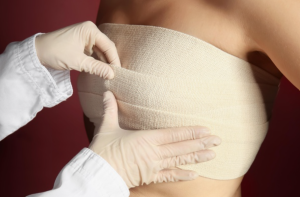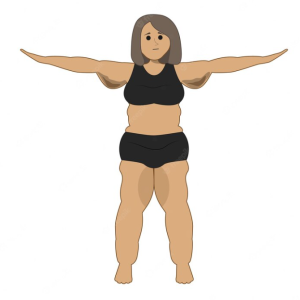New Year: Want to Take Years off your Face?

There may be various reasons to seek facial cosmetic surgery. These include dissatisfaction with naturally-given features, congenital problems, the wish to camouflage scars, or a desire to reverse the changes that have occurred due to ageing or life events.
At Amwaj Polyclinic, we provide the full range of facial rejuvenation procedures, including facelift, neck lift, endoscopic brow lift, fat transfer and eyelid surgeries. Due to our expertise in microsurgery and facial reconstructive work, as well as our specialised technologies and instruments, we have been able to refine treatments for all areas of the face.
Approaching the face as a whole – underlying topography, soft tissues and skin – we often find that more can be achieved with a lighter application of several complementary surgical treatments in combination, rather than a single ‘all-out’ procedure.
Furthermore, we perform facial surgeries that respect the balance of proportions and concentration of character within an individual’s face – the aim is to rejuvenate and refine, not to exaggerate. Fundamentally, our skill lies in the provision of understated solutions that refresh and restore.
A natural looking, rejuvenated appearance is made possible by the skilled and experienced multi-disciplinary team at the Amwaj Polyclinic
MINIMALLY INVASIVE CHEEK LIFT
A mid-face lift, also called a cheek lift, addresses one of the early signs of aging – sagging of the cheeks and the surrounding area. One of the newest approaches to this procedure is the minimally invasive mid-face lift. This can be done with local anesthesia with light sedation. It is an outpatient procedure that takes only about 20-30 minutes to complete and patients are generally fully recovered within a week. And, unlike any other face-lifting procedure, the results are adjustable or reversible, if necessary.
NECK LIFT
A neck lift offers a smoother and more toned appearance to skin under the chin and neck areas. Newer, less invasive procedures offer shorter operative times, quicker recoveries and can result in significant improvement in the neckline without requiring the extensive surgical dissection of a traditional face lift. The procedure is significantly less expensive than a traditional face lift. Neck lift surgery can be performed in a variety of ways. Typically, an incision is made in front of and behind the ear. The edge of the sagging neck muscles is identified and pulled up and secured. The resulting excess skin is removed behind the ear hiding the incision. An alternate method involves creating an incision under the chin and tightening the underlying muscle without removing skin and without the need for an incision in front of the ear.
Procedures are usually performed in half the time of a typical face lift, and patients generally recover within one week to 10 days and usually can return to work after the first week with only minor bruising.
FACE LIFT
(RHYTIDECTOMY)
In the early days of cosmetic surgery, face lifts consisted of skin tightening only. Most modern face lift techniques today consist of tightening both the skin and the tissue beneath the skin in the cheek and the neck. There are many techniques. No matter the technique, however, the principle is the same: tightening of the deeper structures allows less tension to be put on the skin, which may lead to a longer term result. With most face lift procedures, a drainage tube is inserted during surgery. This will be removed a day or two after surgery. All sutures are usually removed within five to 10 days following surgery. Surgeons generally recommend that patients avoid vigorous activity and arrange for post-surgery support from family and friends.
Recovery usually takes two to three weeks, though many patients go back to work in two weeks. Scars are well concealed in natural skin creases and along the hair-line or, if necessary, by makeup until total healing has occurred. Bear in mind that the aging process continues after surgery and that some relaxation of tissues will occur in the first few weeks.
EYELID SURGERY
(UPPER LID BLEPHAROPLASTY)
This procedure is aimed at removing excess skin and fat in the upper eyelids. It is typically done under local anesthesia combined with conscious sedation (“twilight sleep”) and has one of the most rapid recoveries of any facial plastic surgery procedure. The entire procedure takes approximately 45 minutes to an hour and the pain is minimal in most cases. Some minor swelling and bruising may last a few days, and most patients are completely recovered after a week. These procedures may be combined with brow lifts to achieve the best effect.
EYELID SURGERY
(LOWER LID BLEPHAROPLASTY)
This procedure addresses the puffiness of excess fat and the wrinkling of excess skin in the lower eyelids. For those patients with excess fat and little or no excess skin, the procedure can be performed by making the incision inside the eyelid (transconjunctival), avoiding a scar on the skin. For those patients with excess skin and fat, an incision is made just below the eyelashes, where it can be well hidden. Your surgeon will use an endoscope (a pencil-like camera device) inserted through a different incision, where the forehead skin is lifted and the muscles and underlying tissues are removed or altered to produce a smoother appearance.
BROW LIFT
Also called a forehead lift, this procedure corrects a low-positioned or sagging brow, smooths furrows across the forehead and between the brows, and helps restore a more youthful appearance. A forehead lift can be done in a number of ways. the conventional “open” method involves making one continuous incision starting at ear level and moving up around the hairline. the incision is usually made well behind the hairline to hide the scar.
Our surgeons offer innovations in forehead lift procedures including the use of smaller incisions and endoscopic technology to both elevate the eyebrows and reduce frown lines.
With the endoscopic lift, instead of making one long incision, your surgeon will make about three to five shorter incisions in the scalp, where an endoscope (pencil-like camera device) is inserted into one of the incisions. This will allow the surgeon to view the tissues and muscles from a screen and perform the procedure in a minimally invasive way.
EAR RESHAPING (OTOPLASTY)
Cosmetic ear surgery can improve the shape, position or proportion of the ear. It can correct a defect that is present from birth, an ear shape that becomes more noticeable with development or misshapen ears caused by injury.
The ear is a complex composite structure of skin, cartilage and even small muscles organized into a defined 3-d shape. Abnormalities in any of these components can result in a noticeable change in the shape of the ear. Careful analysis of the nature of the abnormality is probably the most important step in performing any re-modeling procedure.
Once a defined preoperative plan is formulated, the procedure consists of altering the ear cartilage by suture and scoring (cartilage cutting) techniques. A dressing is placed over the ear for five days to help reduce the normal swelling that occurs. The results are immediate and lasting.







